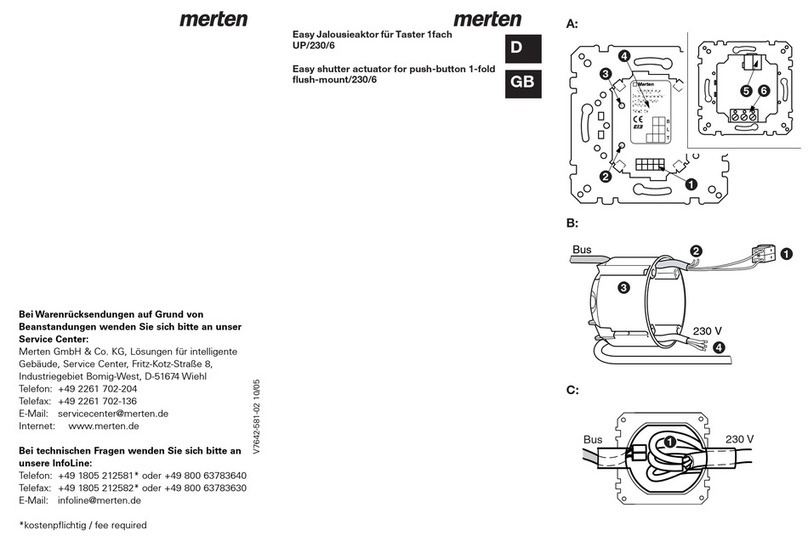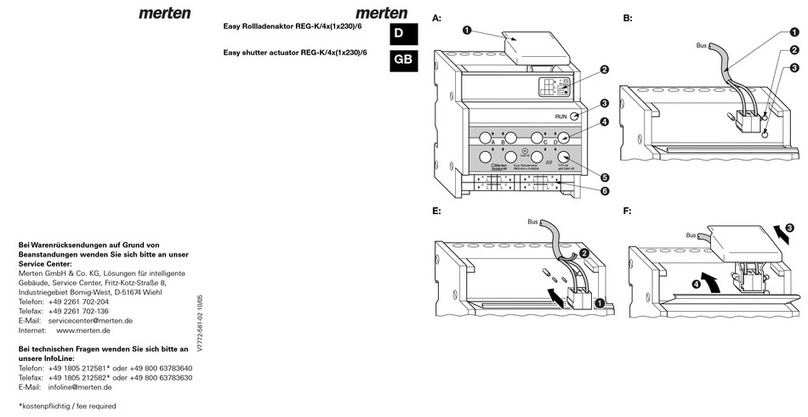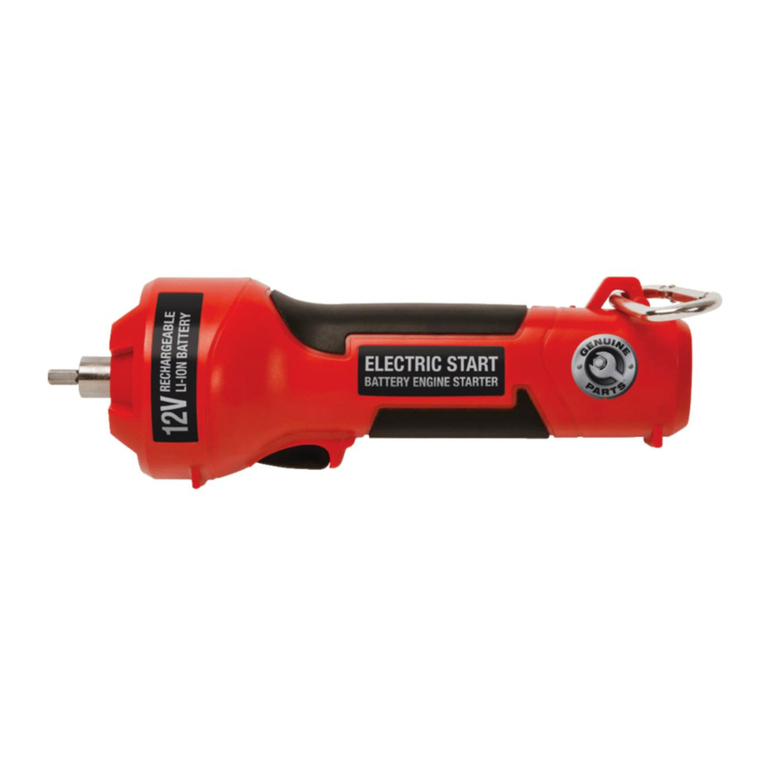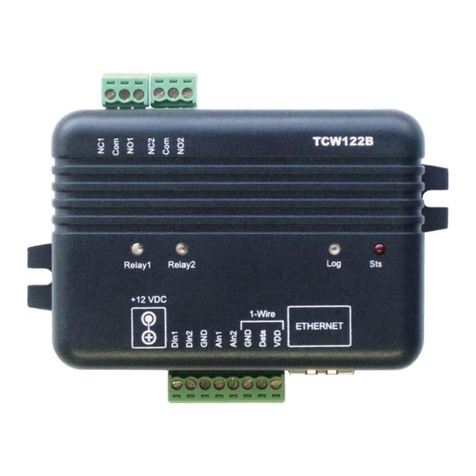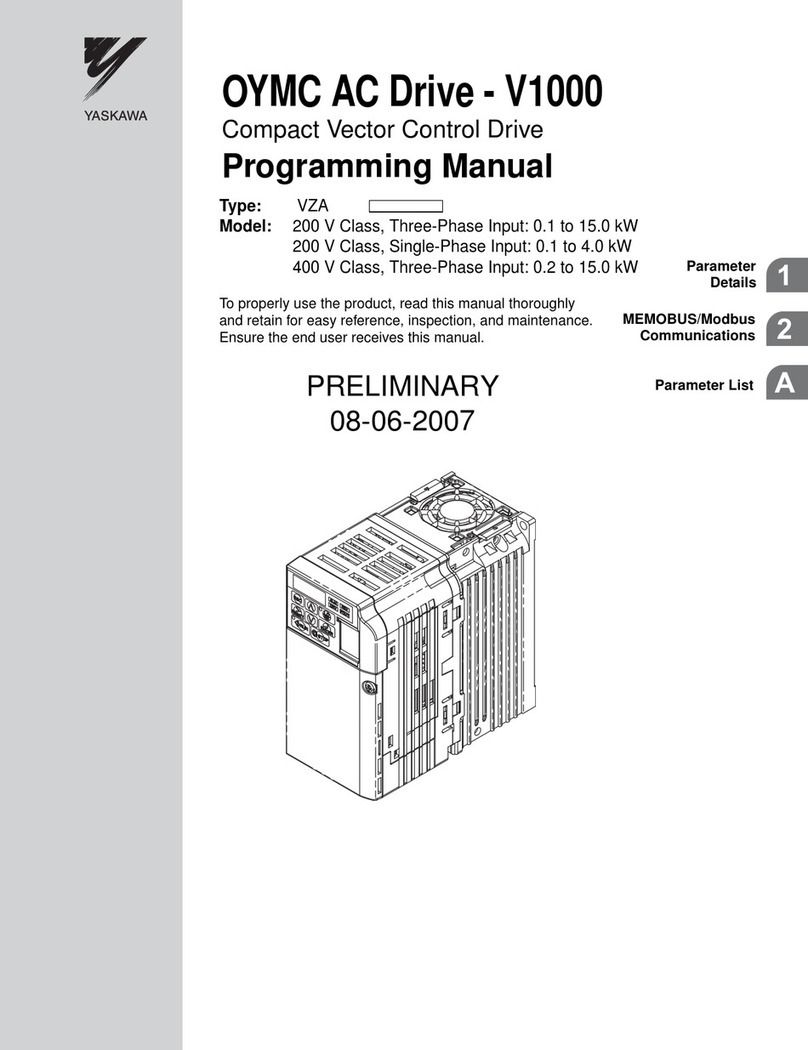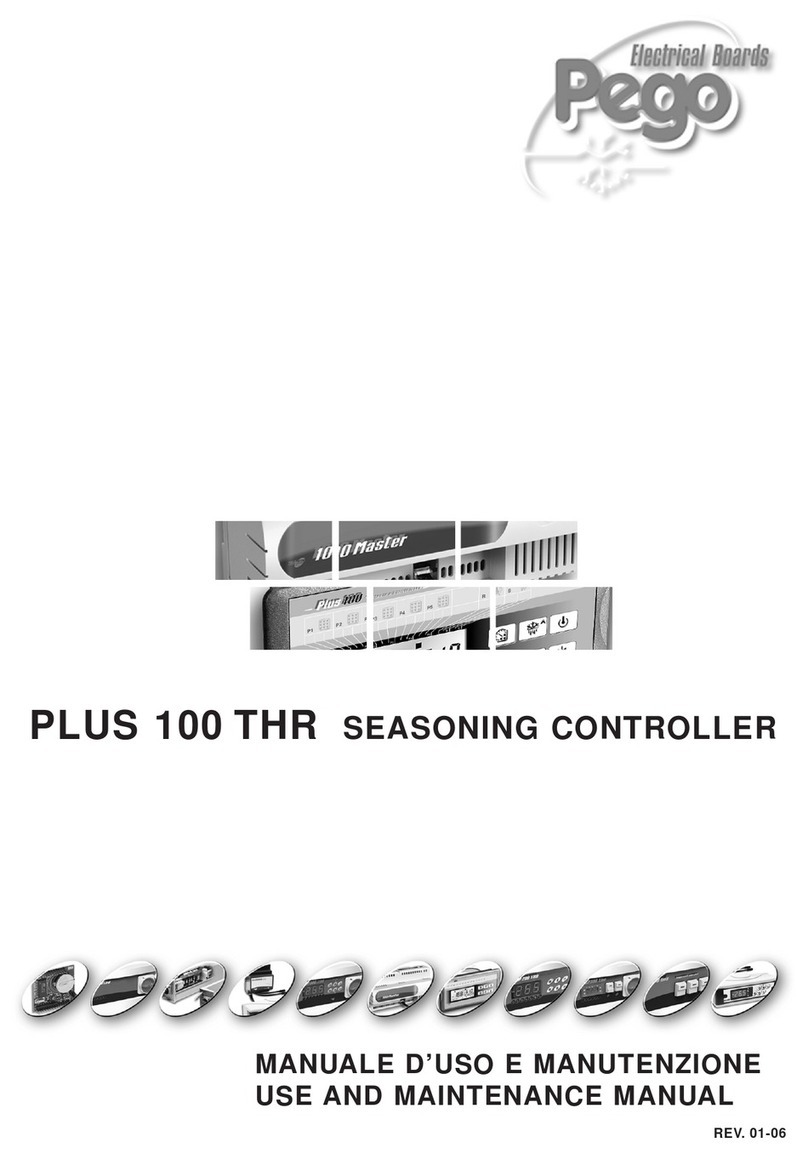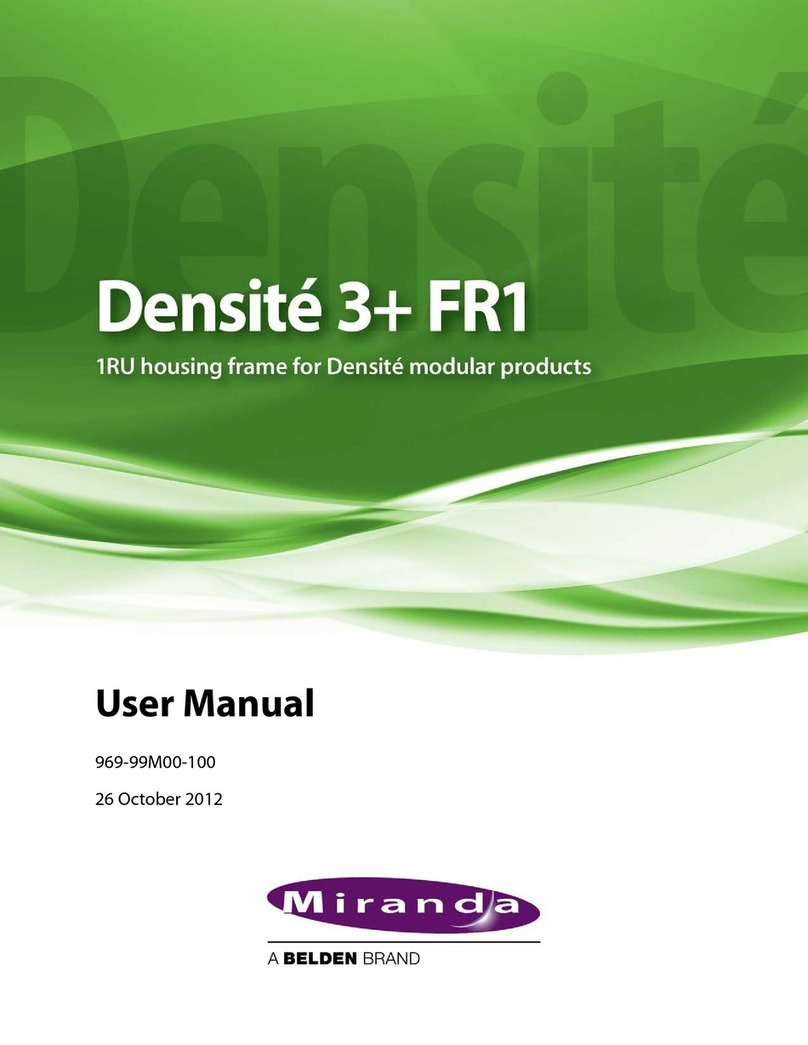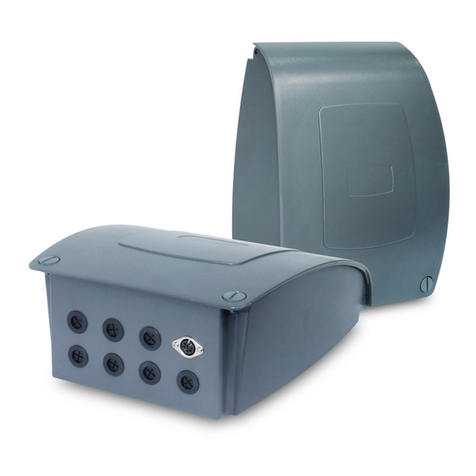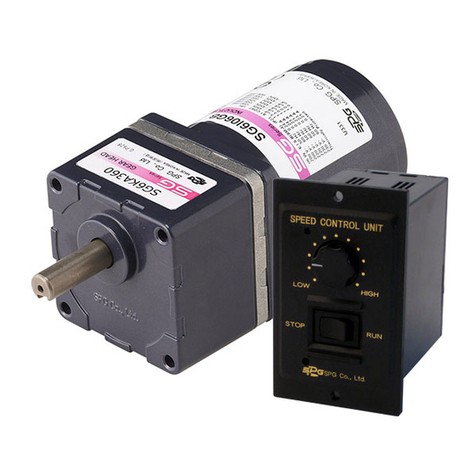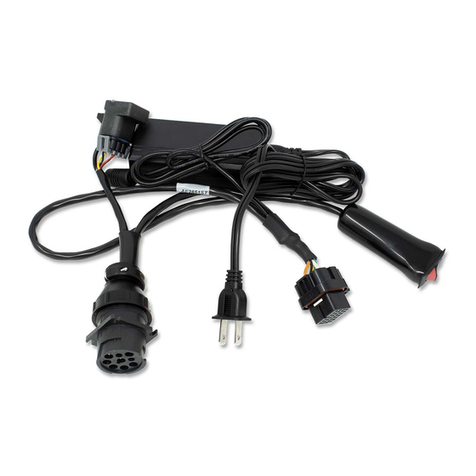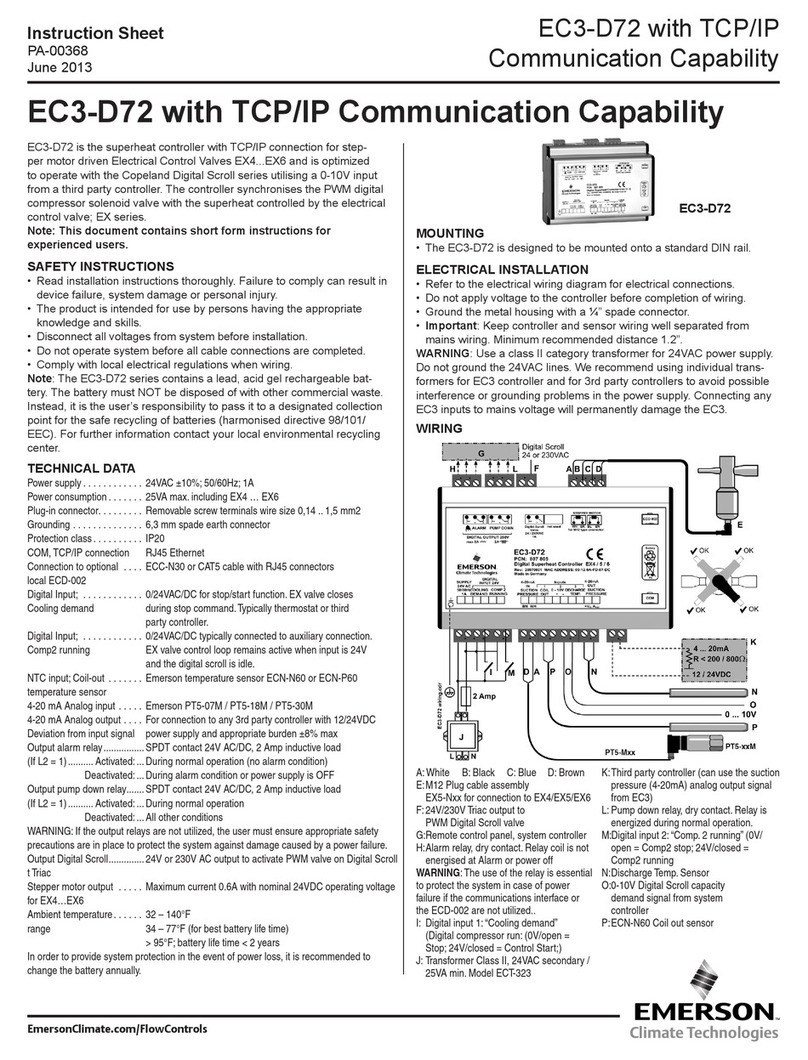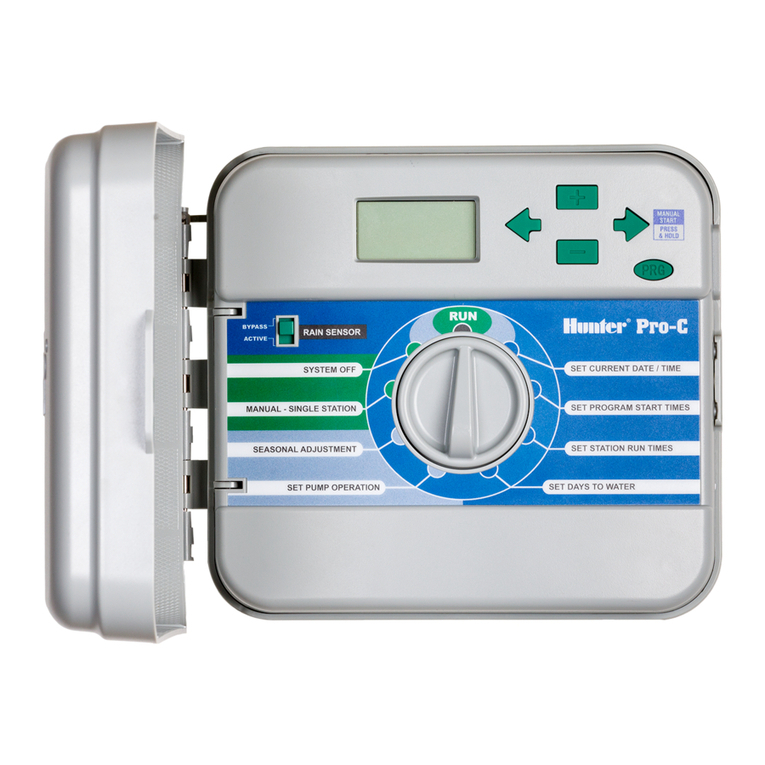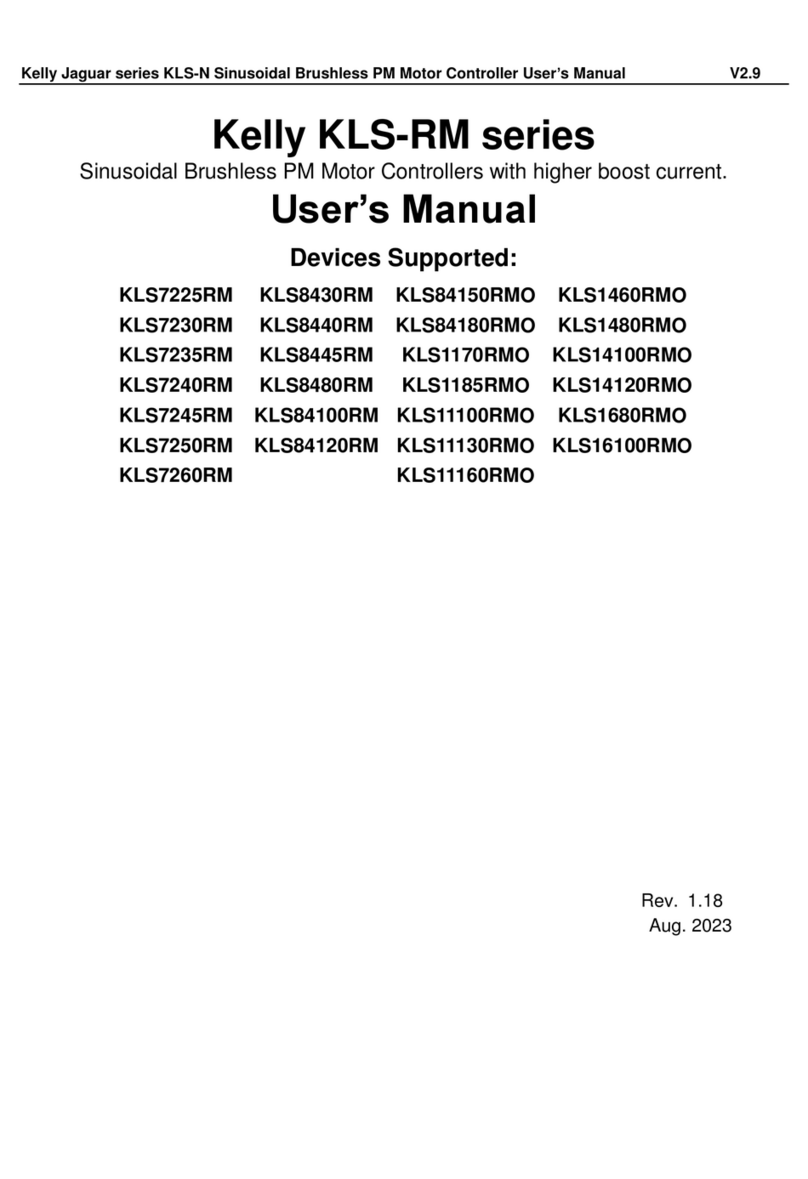merten MEG6212-40 series User manual

V6212-582-00 09/09
Tasterplusmit RaumtemperaturreglerKapitel3:Taster3.1TasterPlus©Merten2005V6212-582-0009/09
System Fläche
System Fläche
– Komplettieren Sie den Taster plus mit einem
Design-Rahmen System Fläche.
¼GEFAHR
Lebensgefahr durch elektrischen Strom.
Das Gerät darf nur von ausgebildeten Elektro-
fachkräften montiert und angeschlossen werden.
Beachten Sie die länderspezifischen Vorschriften
sowie die gültigen KNX-Richtlinien.
Mit dem Taster plus mit Raumtemperaturregler (im
Folgenden Ta st er genannt) stehen Ihnen vier (Taster
2fach) bzw. acht (Taster 4fach) Tastflächen zur Verfü-
gung. Die Tasten können mit verschiedenen Funktionen
frei belegt werden. Darüber hinaus ist ein Raumtempera-
turregler integriert, mit dem Sie verschiedene Reglungs-
arten realisieren können.
Ta s te r f u n k t i o ne n :
– Schalten, Umschalten, Dimmen, Jalousiesteuerung
– Szenenfunktion
– Melde- und Sperrfunktion
– Zeitsteuerung mit Synchronisiation, externe Tempera-
tur auswerten, Ventilatorsteuerung
Funktionen Raumtemperaturregler:
– Heizen/Kühlen mit einem Reglerausgang
– Heizen/Kühlen mit getrennten Reglerausgängen
– Heizen/Kühlen mit zwei Reglerausgängen
Der Taster wird direkt an den KNX angeschlossen und
vom Elektroinstallateur über die KNX-Tool-Software
(ETS) parametriert.
Taster plus mit Raumtemperaturregler
Gebrauchsanleitung
Tas ter 2 fac h pl u s mi t
Raumtemperaturregler
Art.-Nr. MEG6212-40../MEG6212-41..
Tas ter 4 fac h pl u s mi t
Raumtemperaturregler
Art.-Nr. MEG6214-40../MEG6214-41..
Notwendiges Zubehör
Zu Ihrer Sicherheit
Taster kennen lernen
ende
Lieferumfang
Tastenfeld kennen lernen
Die sich gegenüberliegenden Tasten sind entweder als
Einzeltasten oder als Tastenpaar parametrierbar. Je
nach Voreinstellung sind die Tasten mit unterschied-
lichen Funktionen belegt.
Nur für Taster 4fach:
Der Taster 4fach ist mit einem IR-Empfänger ausgestat-
tet, über den Sie den Taster mit jeder IR-Fernbedienung
steuern können. Jede Betätigung einer Taste 1-8 an der
Fernbedienung löst die Funktion der entsprechenden
Taste 1-8 aus.g löst die Funktion der entsprechenden
Taste 1-8 aus. Die Tasten 9 + 10 der Fernbedienung
steuern die Tasten 9 + 10 des Displays.
Damit der integrierte Raumtemperaturregler optimal
funktionieren kann, sollten Sie bei der Wahl des richtigen
Montageortes folgendes berücksichtigen:
ATas ter
BAbdeckung
CFolie
DSicherungsschraube
EKlett-Aufkleber (nur Taster 4fach)
Anschlüsse, Anzeigen und
Bedienelemente
1 - 8: Tasten
9 + 10: Display-Tasten
ADisplay
BBeschriftungsfeld
CStaus-LED
DIR-Empfänger
Montageort
AB C E
++
++++
+
D
+
1
3
5
7
2
4
6
8
A
DC
B
1
3
2
4
910 9
10
110...160 mm
Störquellen
Taster 2fach und 4fach
Nur Taster 4fach
1Taster in den Programmierzustand bringen.
2Laden Sie die physikalische Adresse und Applikati-
on aus der ETS in den Taster: Die rote Program-
mier-LED erlischt.
|Hinweis für den Elektroinstallateur
Notieren Sie die für den Bediener wichtigen Ein-
stellungen, die Sie in der ETS vorgenommen ha-
ben, auf jeden Fall in der Konfigurationstabelle
(siehe „Tabelle der Voreinstellungen”), da nicht
alle einstellbaren Parameter im Display des Tas-
ters angezeigt werden.
Tast er m ont i er en
Taster in Betrieb nehmen
1
23
=
Taster 2fach und 4fach
½VORSICHT
Das Gerät kann beschädigt werden.
Überprüfen Sie vor der Demontage des Tasters,
ob dieser mit einem Diebstahlschutz gesichert
ist. Entfernen Sie immer erst den Diebstahl-
schutz, bevor Sie den Taster abnehmen.
Beschriftungsfeld öffnen
Beschriftete Folien erstellen
Sie können sich auch mit einem beliebigen Layout-Pro-
gramm entsprechende Folienvorlagen erstellen und be-
drucken.
Größenvorgaben für Folien (in mm):
Entnehmen Sie bitte der Bedienungsanleitung Ihres
Druckers, welche Art Folien Sie bedrucken können.
|Verwenden Sie als Unterlage nur die beiliegende
farbige Folie, denn diese gewährleistet, dass die
unterhalb des Beschriftungsfeldes befindlichen
Tasten-LED’s durchscheinen können.
|Im Lieferumfang befinden sich zwei Ausfüh-
rungen der farbigen Folie: eine mit Aussparung in
der Mitte für den IR-Empfänger, eine ohne Aus-
sparung. Wenn Sie den Taster über eine IR-Fern-
bedienung steuern möchten, müssen Sie die
farbige Folie mit Aussparung verwenden. Ver-
wenden Sie immer nur eine der beiden farbigen
Folien.
Beschriftungsfeld schließen
Diebstahlschutz
Tast er de mon tie re n
Tast er be sch rifte n
Taster Höhe Breite Dicke
2fach 31 34,8 max. 0,15
4fach 62 34,8 max. 0,15
12
3
12
12
Der Elektroinstallateur nimmt bei der Montage des Tas-
ters verschiedene Einstellungen vor, die nötig sind, da-
mit Sie den Taster richtig bedienen können. Die
Erläuterungen, die Sie auf den folgenden Seiten finden,
sind zum großen Teil abhängig von diesen Einstellun-
gen. Welche dies sind, trägt der Elektoinstallateurfür Sie
in eine Tabelle ein (siehe „Tabelle der Voreinstellungen”).
|Wenn Sie beim Lesen auf dieses Symbol tref-
fen, bedeutet es, dass Sie den entsprechenden
Wert in der Tabelle nachschlagen können.
Mit dem integrierten Raumtemperaturregler können Sie
verschiedene Regelungsarten realisieren.
Am Display können Sie wichtige Informationen ablesen
und einstellen:
•Solltemperatur
• Betriebsart (Komfort, Standby, Nacht, usw.)
• Arbeitstag/arbeitsfreier Tag
• Anzeigemodus (Soll-, Isttemperatur, Datum usw.)
• Hintergrundbeleuchtung
• Uhrzeit/Schaltzeit einstellen
Das Display kennenlernen
Im Display finden Sie folgende Symbole:
Voreinstellungen
Allgemeines Raumtemperautrregler/
Display
Komfort-Betrieb oder Arbeitstag. Der Raum
wird auf die eingestellte Komfort-Solltempera-
tur geregelt.
Das blinkende Symbol bedeutet, dass die
Komfortverlängerung aktiv ist.
Standby-Betrieb oder arbeitsfreier Tag. Der
Raum wird auf die eingestellte Standby-Soll-
temperatur geregelt.
Nacht-Betrieb. Der Raum wird auf die einge-
stellte Nacht-Solltemperatur geregelt.
Zeitsteuerung ist aktiv.
Ständige Anzeige: Zeitsynchronisation ist er-
folgt.
Blinkende Anzeige: Zeitsynchronisation ist
nicht erfolgt, die angezeigte Uhrzeit ist mögli-
cherweise ungenau.
Alarm, Symbol blinkt. Bei Taster 4fach: zu-
sätzlich akustischer Warnton möglich .
1 2 3 4
5 6 7
Wochentag-Anzeige .
In Verbindung mit : Ventilatorstufe
Menüpunkt „Hintergrundbeleuchtung einstel-
len“ ist aktiviert.
Ventilator.
Regelart Heizen ist aktiv.
Regelart Kühlen ist aktiv.
Anzeige unter Symbol „Heizen“ oder „Kühlen“.
- Bei Heizen oder Kühlen:
„1“: Solltemperatur ist noch nicht erreicht. Der
Regler heizt oder kühlt.
„2“: Stufe 2 ist aktiviert (Anzeige nur, wenn
zweistufiges Heizen/Kühlen eingestellt ist.-
Bei Heizen und Kühlen: Zwei Modi stehen zur
Verfügung: Manuell oder Automatik
°C Temperaturanzeige in Grad Celsius
°F Temperaturanzeige in Grad Fahrenheit
88:88 Zeitanzeige bzw. Wertanzeige
Das Bedienermenü kennen lernen
Um die einzelnen Funktionen des Raumtemperaturreg-
lers abzurufen, steht Ihnen ein Bedienermenü zur Verfü-
gung.
In die Abdeckung des Displays ist eine Tasterwippe mit
drei Druckpunkten integriert: links, Mitte und rechts. Mit
diesen Tasten können Sie ins Bedienermenü gelangen,
hin und her blättern und einzelne Werte verändern.
Übersicht Menüstruktur
*Tastendruck lang = ca. 5 s
**Tastendruck kurz = ca. 1 s
|Wenn Sie für den Zeitraum von ca. 1 min keine
Taste drücken, kehrt der Raumtemperaturregler
automatisch in die Basisanzeige zurück. DieWer-
te vor Aufrufen des Bedienermenüs werden wie-
derhergestellt, evtl. durchgeführte
Änderungen werden nicht gespeichert.
Tastendruck Ausgelöste Funktion
Mitte –
Tastendruck lang*
Menü auswählen
Speichern
Rückkehr zur Basisanzeige
Mitte –
Tastendruck kurz* Nächsten Menüpunkt auswählen
Links/Rechts –
Tastendruck kurz** Wert ändern
t2.1 ... t2.4
Arbeitstag/
arbeitsfreier Tag
Anzeigemodus
Hintergrund-
beleuchtung
t1.1... t1.4
Uhrzeit/Schaltzeit
Betriebsart
Solltemperatur
Basisanzeige
(aktuelle Temp.)
Stunden
einstellen
Minuten
einstellen

V6212-582-00 09/09
Basisanzeige
Hier sehen Sie ein Beispiel für die Basisanzeige des Dis-
plays:
• Betriebsart„Komfort
• Isttemperatur
• Heizung ist aktiv, um die Komfort-Solltemperatur
zu erreichen
• wird permanent angezeigt: Zeitsynchronisation
mit der Zeitschaltuhr (z. B. Jahreszeitschaltuhr REG-
K) ist erfolgt.
Uhrsymbol blinkt: Zeitsynchronisation ist (noch) nicht
erfolgt.
• Wochentagsanzeige 3= Mittwoch
|Beachten Sie, dass die Anzeige des Wochen-
tages von den Voreinstellungen abhängig ist. Ihr
Elektroinstallateur hat eingestellt ,
welcher Wochentag als 1 festgelegt ist. In man-
chen Ländern ist dies nicht der Montag, sondern
z. B. der Sonntag. Dementsprechend haben die
anderen Ziffern dann abweichende Bedeutungen
(z. B. 2 = Montag, 3 = Dienstag usw.).
Solltemperatur einstellen
Der Elektroinstallateur hat drei Solltemperaturen ( je-
weils für Heizen und Kühlen) festgelegt:
• für Komfortbetrieb
• für Standby-Betrieb
•fürNachtbetrieb
|Sie sehen die Solltemperatur der gerade aktiven
Betriebsart. Sie können nur diese Solltemperatur
verändern. Um die Solltemperatur einer anderen
Betriebsart zu verändern, müssen Sie zunächst
die Betriebsart wechseln (siehe „Betriebsart ein-
stellen“).
|Der Elektroinstallateur hat festgelegt , inner-
halb welcher Grenzen Sie diesen Wert verändern
können (z. B. innerhalb von minimal 16 °C bis ma-
ximal 26 °C). Sie können keinen Wert unterhalb
bzw. oberhalb dieser Grenzwerte einstellen.Falls
vom Elektroinstallateur so eingestellt , ist beim
Taster 4fach ein Warnton zu hören, sobald Sie
versuchen, diese Grenzwerte zu überschreiten.
Raumtemperaturregler/Displayanzeige
einstellen
1x 5 s
1
2
=
- 0,5° + 0,5°
1x 5 s
Betriebsart einstellen
• b 0 = Komfortbetrieb
Wählen Sie diese Betriebsart, wenn Sie sich im Raum
aufhalten. Die Heizung wird auf die Komfort-Solltem-
peratur eingestellt (z. B. 21 °C ).
•b1=Standby-Betrieb
Wählen Sie diese Betriebsart, wenn Sie sich über län-
gere Zeit nicht im Raum aufhalten. Die Heizung wird
auf die Standby-Solltemperatur (z. B. auf 18 °C ).
•b2=Nachtbetrieb
Die Heizung wird auf die Nacht-Solltemperatur einge-
stellt (z. B. auf 15 °C ).
• b 3 = Komfortverlängerung (blinkt)
Wählen Sie diese Betriebsart, wenn Sie den Nachtbe-
trieb vorübergehend unterdrücken wollen. Die Hei-
zung wird auf die Komfort-Solltemperatur eingestellt
(z. B. 21 °C ).
|Der Elektroinstallateur hat eventuell eingestellt
, zu welchen Uhrzeiten die Betriebsarten auto-
matisch von Nachtbetrieb zu Komfortbetrieb und
umgekehrt wechseln
Arbeitstag/arbeitsfreier Tag einstellen
•h0=ArbeitsfreierTag
• h 1 = Arbeitstag
1
1x 5 s
2
1x 1 s
+
-
3
1x 5 s
=
1
1x 5 s
2
2x 1 s
3
1x 5 s
=
Anzeigemodus einstellen
• d 0 = Isttemperatur (ohne Nachkommastelle)
• d 1 = Solltemperatur (auf 0,5-Grad genau)
• d 2 = Temperatur von externem Temperatursensor
•d3=Datum
•d4=Uhrzeit
• d 5 = Ventilatorstufe
• d 6 = Datum und Uhrzeit im Wechsel
• d 7 = Datum, Uhrzeit und Ventilatorstufe im Wechsel
• d 8 = Ist- und Solltemperatur im Wechsel
• d 9 = Ist-/Solltemperatur sowie Uhrzeit im Wechsel
• d 10 = Ist-/Solltemperatur sowie Ventilatorstufe im
Wechsel
• d 11 = Temperatur von externem Temperatursensor
und Isttemperatur
• d 12 = Temperatur von externem Temperatursensor,
Isttemperatur und Uhrzeit im Wechsel
• d 13 = Ist-/Solltemperatur, Datum sowie Uhrzeit im
Wechsel
• d 14 = Ist-/Solltemperatur, Ventilatorstufe sowie Uhr-
zeit im Wechsel
• d 15 = Temperatur von externem Temperatursensor,
Isttemperatur, Ventilatorstufe und Uhrzeit
im Wechsel
Hintergrundbeleuchtung einstellen
+-
1
1x 5 s
2
3x 1 s
3
1x 5 s
=
4x 1 s
4
1 = 10 =...
+-
1
1x 5 s
2
3
=
1x 5 s
Interne Uhrzeit und Schaltzeiten einstellen
|Wenn die Uhrzeit von einer externen Zeitschalt-
uhr aktualisiert wird, wird diese Uhrzeit hier ange-
zeigt. Wenn Sie diese Uhrzeit manuell ändern,
wird sie bei der nächsten Aktualisierung wieder
von der Zeitschaltuhr überschrieben.
|Sie können über das Bedienermenü nur die
Schaltzeiten verstellen, die über die ETS vorpro-
grammiert wurden. In der ETS nicht definierte
Schaltzeiten werden bei Aufruf im Display durch
„--:--“ angezeigt und lassen sich nicht über die
Displaytasten einstellen.
•t 0 = Uhrzeit (von externer Zeitschaltuhr übermittelte
oder interne)
•t 1.1 bis t 1.4 = Zeitkanal 1, Schaltzeit 1-4
•t 2.1 bis t 2.4 = Zeitkanal 2, Schaltzeit 1-4
3Mittlere Taste lang drücken: Die Stundenanzeige
für die gewählte Uhr-/Schaltzeit beginnt zu blinken.
4Linke oder rechte Taste am Display drücken:
Stunden wie gewünscht einstellen
5Mittlere Taste kurz drücken: Die Minutenziffern blin-
ken nun.
6Linke oder rechte Taste am Display drücken:
Minuten wie gewünscht einstellen.
7Mittlere Taste kurz drücken: Die eingestellte Zeit
(t...) erscheint wieder.
8Mittlere Taste lang drücken: Speichern der ge-
wünschten neuen Einstellung.
|Synchronisieren Sie die Uhrzeit über eine externe
Zeitschaltuhr, um die Genauigkeit über einen lan-
gen Zeitraum zu gewährleisten.
Solltemperatur oder Betriebsart direkt anwählen
Der Elektroinstallateur hat festgelegt , ob Sie die Soll-
temperatur oder die Betriebsart durch einen rechten/lin-
ken Tastendruck direkt aufrufen und verstellen können
oder ob keine dieser Funktionen aktiviert ist.
11 x Ta st e rechts/links – kurzer Tastendruck.
Der Menüpunkt „Solltemperatur einstellen“ oder „Be-
triebsart einstellen“ wird mit dem zuletzt eingestellten
Wert angezeigt. Verändern Sie den Wert durch Drücken
der linken oder rechten Taste am Display. Der Wert wird
direkt übernommen, ein Abspeichern ist nicht notwen-
dig. Nach ca. 5 s kehrt der Raumtemperaturregler auto-
matisch in die Basisanzeige zurück.
5x 1 s
+-
1
1x 5 s
2
3
=
1x 5 s
Tas te nb ele gu ng
Zeitsteuerung Kanal 1
Zeitsteuerung Kanal 2
Alarmfunktionen
Sollwertverstellung gültig bis: Betriebsartwechsel /
dauerhaft
Wochenanfang (1): am Fr / Sa / So / Mo
Direktanwahl: Solltemperatur / Betriebsart / Keine
Sonstige Displayanzeigen
APL Applikation nicht geladen oder fehlerhaft
E2 Solltemperatur Heizen = Solltemperatur Kühlen
E3 ETS Applikation ist nicht kompatibel
E4 Oberer Bereich Kontrollwert = unterer Bereich
Kontrollwert
E5 FRAM Fehler
E6 Fehler im Temperatursensor
E7 STACK Fehler
E8 RAM Fahler
Tabelle der Voreinstellungen
Taste 1 ___________________________________
Taste 2 ___________________________________
Taste 3 ___________________________________
Taste 4 ___________________________________
Taste 5 ___________________________________
Taste 6 ___________________________________
Taste 7 ___________________________________
Taste 8 ___________________________________
Schaltzeit 1 2 3 4
Uhrzeit ___:___ ___:___ ___:___ ___:___
Funktion: _______________________________
Schaltzeit 1 2 3 4
Uhrzeit ___:___ ___:___ ___:___ ___:___
Funktion: _______________________________
Alarm, wenn Isttemperatur kleiner als Frost-
schutztemperatur oder
Alarm bei Grenzüberschreitung der Sollwert-
verstellung
andere:
____________________________________
____
Sollwerte Heizen in °C/°F Verstellgrenze in °C/°F
Komfort: ______ min: _____ max: _____
Standby: ______ min: _____ max: _____
Nacht: ______ min: _____ max: _____
Sollwerte Kühlen in °C/°F Verstellgrenze in °C/°F
Komfort: ______ min: _____ max: _____
Standby: ______ min: _____ max: _____
Nacht: ______ min: _____ max: _____
Frostschutz: ______ min: _____ max: _____
Hitzeschutz: ______ min: _____ max: _____
Bei Warenrücksendungen auf Grund von Beanstan-
dungen wenden Sie sich bitte an unser Service
Center:
Merten GmbH, Lösungen für intelligente Gebäude, Ser-
vice Center, Fritz-Kotz-Str. 8, Industriegebiet Bomig-
West, D-51674 Wiehl
Bei technischen Fragen wenden Sie sich bitte an
unsere InfoLine:
*kostenpflichtig/fee required
Technische Daten
Spanungsversor-
gung: über KNX
Anschluss: Busanschlussklemme
Anzeigeelemente
Taster 2-/4fach: 1x Display
1x Betriebs-LED
Taster 2fach: 4x Status-LED
Taster 4fach: 8x Status-LED
Piezo-Summer
Bedienelemente
Taster 2-/4fach: 3 Tasten zur Menüführung
Taster 2fach: 4 Tasten
Taster 4fach: 8 Tasten
IR-Empfänger
(Empfangswinkel: 60°)
Messbereich: 0 bis 40 °C
Messgenauigkeit: ± 1 K, abhängig vom Einbauort
Offset parametrierbar
Reglertyp: 2-Punkt
stetige PI-Regelung
schaltende PI-Regelung (PWM)
Reglermode: Heizen mit 1 Reglerausgang
Kühlen mit 1Reglerausgang
Heizen mit 2 Reglerausgängen
Kühlen mit 2 Reglerausgang
Heizen und Kühlen mit
getrennten Reglerausgängen
2stufiges Heizen mit
2 Reglerausgängen
2stufiges Kühlen mit
2 Reglerausgängen
2stufiges Heizen und 2stufiges
Kühlen mit 4 Reglerausgängen
Schutzart: IP 20
Merten GmbH
Telefon: +49 2261 702-204
Telefax: +49 2261 702-136
E-Mail: servic[email protected]
Internet: www.merten.de
Telefon: +49 1805 212581* oder +49 800 63783640
Telefax: +49 1805 212582* oder +49 800 63783630
E-Mail: [email protected]e

V6212-582-00 09/09
Push-buttonplus withroom temperaturecontrol unitKapitel3:Taster3.1TasterPlus© Merten2005V6212-582-0009/09
System Design
System Design
– You have to complete the push-button plus with a de-
sign frame system Design.
¼DANGER
Risk of fatal injury from electrical current.
The unit may only be installed and connected by
skilled electicians. Observe the regulations valid
in the country of use, as well as the valid KNX
guidelines.
The push-button plus with room temperature con-
trol unit (reffered to below as the push-button) gives
you four (push-button 2-gang) or eight (push-button 4-
gang) operating surfaces. The keys can be set individu-
ally to perform various functions. Furthermore a room
temperature control unit is integrated, which allows you
to control temperature in various different ways.
Functions of the push-button:
– Switchin, toggling, dimming, blind control
– Szenenfunktion
– Communication and disable functions
– Time control with synchronisation, reading external
temperature, fan control
Functions of the room temperature control unit:
– Heating/cooling with 1 controller output
– Heating/cooling with seperated controller outputs
– Heating/cooling with 2 controller outputs
The push-button can directly be connected to the KNX
and is parameterised by the electrical installer via the
KNX-Tool-Software (ETS).
Push-button plus with room
temperature control unit
Operating instructions
Push-button 2-gang plus with room
temperature control unit
Art. no. MEG6212-40../MEG6212-41..
Push-button 4-gang plus with room
temperature control unit
Art. no. MEG6214-40../MEG6214-41..
Necessary accessories
For your safety
Getting to know the push-button
ende
Scope of delivery
Getting to know the keypad
The push-buttons opposite each other can be config-
ured as either individual push-buttons or a push-button
pair. The push-buttons are programmed with various
functions depending on the pre-setting.
For 4-gang push-button only:
The 4-gang push-button is equipped with an IR receiver,
with which you can control the push-button with any IR
remote control. Pressing push-buttons 1-8 on the remote
control activates the function of the corresponding push-
button. Push-buttons 9 and 10 of the remote control have
a direct effect on display push-buttons 9 and 10.
In order for the integrated room temperature control unit
to work in the best way, you should keep in mind the fol-
lowing when selecting the right installation side:
APush-button
BCover
CFoil strip
DSafty screw
ESticker (only push-button 4-gang)
Connections, displays and operating
elements
1 - 8: Function keys
9 + 10: Function keys for display
ADisplay
BLED
CIR receiver
DStaus LED
Mounting side
AB C E
++
++++
+
D
+
1
3
5
7
2
4
6
8
A
DC
B
1
3
2
4
910 9
10
110...160 mm
Sources of interference
Push-button 2-gang and 4-gang
Only push-button 4-gang
1Set the push-button to programming state
2Load the physical address and application from the
ETS into the push-button: The red programming
LED goes out.
|Note for the electrician
Make sure that you note the settings you have
made in the ETS which are important for the user
in the configuration table (see „Pre-settings ta-
ble“), because not all parameters that can be set
are shown in the display of the push-button.
Mounting the push-button
Operating the push-button
1
23
=
Push-button 2-gang and 4-gang
½CAUTION
The device could become damaged.
Before removing the push-button, check whether
it is secured with protection against theft. Always
remove the protection against theft before remov-
ing the push-button.
Opening the labelling field
Creating labelled foil strips
You can also create and print corresponding foil strip
templates with any layout program.
Size specifications for foils (in mm):
Consult the operating instructions of your printer to find
out which type of foil strips you can print.
|Only use the coloured foil strips enclosed as the
base, since this ensures that the push-button
LEDs under the labelling field can shine through.
|Two versions of coloured foil strips are provided:
one with a recess in the middle for the IR receiver,
and one without a recess. If you want to control
the push-button via an IR remote control, you
have to use the coloured foil strip with recess. Al-
ways only use one of the two coloured foil strips.
Closing the labelling field
Anti-theft protection
Dismantling the push-button
Labbelling the push-button
Push-button Height Width Thickness
2-gang 31 34,8 max. 0,15
4-gang 62 34,8 max. 0,15
12
3
12
12
When installing the push-button, the electrician defines
various settings that are necessary so you can use the
push-button correctly. Most of the explanations provided
on the following pages depend on these settings. The
electrician enters the settings in question in a table for
you (see table „pre-settings”).
|If you come across this symbol when reading,
it means that you can look up the corresponding
value in the table.
With the integrated room temperature control unit, you
can control the temperature in various different ways.
You can read and set important information on the dis-
play:
• Setpoint temperature
• Operating mode (comfort, standby, night, etc.)
• Working day/holiday
• Display mode (setpoint temperature, actual tempera-
ture, date etc.)
•Backgroundlighting
• Setting the time/switching time
Getting to know the display
You will see the following symbols on the display:
Pre-settings
Preface room temperature control unit/
display
Comfort mode or working day. The room tem-
perature is adjusted to the set comfort setpoint
temperature .
The flashing symbol means that the comfort ex-
tension is active.
Standby mode or holiday. The room tempera-
ture is adjusted to the set standby setpoint tem-
perature .
Night operation. The room temperature is ad-
justed to the set night setpoint temperature .
Time control is active.
Constant display: The time has been synchro-
nised.
Flashing display: The time has not been syn-
chronised; the displayed time may not be accu-
rate.
Alarm, symbol flashing. For 4-gang push-but-
ton: Additional acoustic warning sound possi-
ble .
1 2 3 4
5 6 7 Weekday display .
In combination with : Fan speed
Menu command „Setting the background light-
ing“ is activated.
Fan.
Heating control mode is active or controller re-
quires power.
Cooling control mode is active or controller re-
quires power.
Display under „Heating“ or „Cooling“ symbol.
- For heating or cooling:
„1“: Setpoint temperature has not yet been
reached. The controller is heating or cooling.
„2“: Level 2 is activated (display only if two-step
heating/cooling is set..
- For heating and cooling:
Two modes are available: Manual or automatic
°C Temperature display in degrees Celsius
°F Temperature display in degrees Fahrenheit
88:88 Time display or value display
Getting to know the control menu
There is a control menu for selecting the individual func-
tions of the room temperature controller.
A rocker is integrated in the cover of the display. It has
three contacts: left, centre and right. With these push-
buttons, you can access the control menu, scroll back-
wards and forwards and change individual values.
Overview of the menu structure
*Long push-button action = approx. 5 s
**Short push-button action = approx. 1 s
|If you don‘t press any push-button within a period
of about one minute, the room temperature con-
trol unit automatically returns to the standard dis-
play. The values that were set before the control
menu was opened are restored; any changes
that you may have made are not saved. Ex-
ception: The temperature is saved directly.
Push-button action Function triggered
Center –
Long push-button action*
Select menu
Save
Return to standard display
Center –
Short push-button action** Select next menu com-
mand
Left/Right –
Short push-button action** Change value
t2.1 ... t2.4
t1.1... t1.4
Setpoint
temperature Operation mode
Workd ay/
leisure day
Display mode
Standard Display
(current temp.)
edit hour
edit minutes
Time/
switching time
Display backlight
Setpoint temp.

V6212-582-00 09/09
Standard display
Here you see an example of the standard display:
• „Comfort“ operating mode
• Actual temperature
• Heating is active in order to reach the comfort set-
point temperature .
• is constantly displayed: The time has been syn-
chronised with the time switch (e.g. year time switch
REG-K). Clock symbol flashes: The time has not (yet)
been synchronised.
•Weekdaydisplay3= Wednesday
|Note that the display of the weekday depends on
the pre-settings. The electrician has set ,
a specific weekday to 1. In some countries the
first day of the week is not Monday, but Sunday,
for example. The other numbers have different
meanings accordingly (e.g., 2 = Monday,
3 = Tuesday etc.).
Setting the setpoint temperature
The electrician has specified three setpoint tempera-
tures ( for both heating and cooling):
• for comfort mode
• for standby mode
• for night operation
|You see the setpoint temperature of the current
operating mode. You can only change this set-
point temperature. In order to change the setpoint
temperature of another operating mode, you first
have to switch the operating mode (see „Setting
the operating mode“).
|The electrician specified , within which limits
this value can be changed (for example, within a
minimum of 16 °C up to a maximum of 26 °C). You
cannot set any value below or above these limit
values. If the electrician made the appropriate
setting , the 4-gang push-button emits a warn-
ing sound as soon as you attempt to exceed
these limit values.
Setting the room temperature control
unit/display view
1x 5 s
1
2
=
- 0,5° + 0,5°
1x 5 s
Setting the operating mode
• b 0 = comfort mode
Select this operating mode if you are staying in the
room. The heating is set to the comfort setpoint tem-
perature (e.g. 21 °C ).
• b 1 = standby mode
Select this operating mode when you are not in the
room over a longer period of time. The heating is set to
the standby setpoint temperature (e.g. 18 °C ).
• b 2 = night operation
The heating is set to the night setpoint temperature
(e.g. 15 °C ).
• b 3 = comfort extension (flashes)
Select this operating mode if you want to suppress
night operation temporarily. The heating is set to the
comfort setpoint temperature (e.g. 21 °C ).
|The electrician may have set , the times at
which the operating mode switches automatically
from night operation to comfort mode and vice
versa.
Setting the working day/holiday
• h 0 = holiday
•h1=workingday
1
1x 5 s
2
1x 1 s
+
-
3
1x 5 s
=
1
1x 5 s
2
2x 1 s
3
1x 5 s
=
Setting the display mode
|With the display mode, you can select which val-
ues you want to see in the display.
• d 0 = actual temperature (without decimal point)
• d 1 = setpoint temperature (to 0.5 degree accuracy)
• d 2 = temperature from external temperature sensor
•d3=date
•d4=time
• d 5 = fan speed
• d 6 = date and time in alternation
• d 7 = date, time and fan speed in alternation
• d 8 = actual and setpoint temperature in alternation
• d 9 = actual/setpoint temperature and time in alterna-
tion
• d 10 = actual/setpoint temperature and fan speed in al-
ternation
• d 11 = temperature from external temperature sensor
and actual temperature
• d 12 = temperature from external temperature sensor,
actual temperature and time in alternation
• d 13 = actual/setpoint temperature, date and time in al-
ternation
• d 14 = actual/setpoint temperature, fan speed and
time in alternation
• d 15 = emperature from external temperature sensor,
actual temperature, fan speed and time in alternation
Setting the background lighting
+-
1
1x 5 s
2
3x 1 s
3
1x 5 s
=
4x 1 s
4
1 = 10 =...
+-
1
1x 5 s
2
3
=
1x 5 s
Setting the internal clock time and switching times
|If the time is updated by an external time switch,
the updated time is displayed here. If you change
this time manually, it will be overwritten again by
the time switch during the next update.
|You can only use the control menu to adjust the
switching times which have been pre-pro-
grammed via the ETS. Switching times which are
not defined in the ETS are shown when they are
called up in the display with „--:--“ and cannot be
set using the push-buttons on the display.
•t 0 = time (either transmitted from the external time
switch or from the internal clock)
•t 1.1 bis t 1.4 = time channel 1, switching time 1-4
•t 2.1 bis t 2.4 = time channel 2, switching time 1-4
3Press central push-button and hold : he hour dis-
play for the selected time/switching time starts to
flash.
4Press the left or right push-button on the display:
Set the hours as desired
5Press the central push-button briefly : The minute
digits now flash.
6Press the left or right push-button on the display:
Set the minutes as desired.
7Press the central push-button briefly: The set time
(t...) appears again.
8Press the central push-button briefly again: Save
the desired new setting.
|Synchronise the time via an external time switch
to guarantee precision over a long period of time.
Selecting the setpoint temperature or operating
mode directly
The electrician specified , whether you can access
and adjust the setpoint temperature or the operating
mode directly using the right/left push-button, or whether
none of these functions is activated.
11 x push-button left/right/links – short push-but-
ton action.
The menu command „Set setpoint temperature“ or „Set
operating mode“ is displayed with the last set value.
Change the value by pressing the left or right push-but-
ton on the display. The value is saved directly; you don‘t
have to save it separately. After approx. 5 s, the room
temperature control unit returns automatically to the
standard display.
5x 1 s
+-
1
1x 5 s
2
3
=
1x 5 s
Push-button assignment
Time control channel 1
Time control channel 2
Alarm functions
Setpoint adjustment valid until:
Operation mode change / Permanent
Week starts (1): on Fri / Sat / Sun / Mon
Direct selection: Setpoint temperature / Operation
mode / None
Other display views
APL. Application not loaded or faulty
E 2 Heating setpoint temperature = cooling setpoint
temperature
E 3 ETS application is not compatible
E 4 Upper control value range = lower control value
range
E 5 FRAM error
E 6 Error in temperature sensor
E 7 STACK error
E 8 RAM error
E 9 Buffer error
Presettings table
Push-button 1 _____________________________
Push-button 2 _____________________________
Push-button 3 _____________________________
Push-button 4 _____________________________
Push-button 5 _____________________________
Push-button 6 _____________________________
Push-button 7 _____________________________
Push-button 8 _____________________________
Switching
time
1 234
Time ___:___ ___:___ ___:___ ___:___
Function: _______________________________
Switching
time
1 234
Time ___:___ ___:___ ___:___ ___:___
Function: _______________________________
Alarm sounds if actual temperature is less than
the frost protection temperature or
Alarm sounds if the setpoint adjustment limit is
exceeded
Other:
____________________________________
Heating setpoints in °C/°F Adjustment limit in °C/°F
Comfort: ______ min: _____ max: _____
Standby: ______ min: _____ max: _____
Night: ______ min: _____ max: _____
Heating setpoints in °C/°F Adjustment limit in °C/°F
Comfort: ______ min: _____ max: _____
Standby: ______ min: _____ max: _____
Night: ______ min: _____ max: _____
Frost
protection: ______ min: _____ max: _____
Heat
protection: ______ min: _____ max: _____
If you have technical questions, please contact the Cus-
tomer Care Center in your country.
www.schneider-electric.com
This product must be installed, connected and used in
compliance with prevailing standards and/or installation
regulations. As standards, specifications and designs
develop from time to time, always ask for confirmation of
the information given in this publication.
Technical data
Power supply: via KNX
Connection: Bus connecting terminal
Display elements
Push-button
2-/4-gang: 1x Display
1x operational LED
Push-button 2-gang: 4x Status LED
Push-button 4-gang: 8x Status LED
Piezo buzzer
Operating elements
Push-button
2-/4-gang: 3 push-buttons to navigate
menu
Push-button 2-gang: 4 push-buttons
Push-button 4-gang: 8 push-buttons
IR receiver
(angle of reception: 60°)
Measuring range: 0 to 40 °C
Measuring accuracy: ± 1 K, depending on installa-
tion site; Offset can be con-
figured
Controller type: 2-step
Continuous PI controller
Switching PI controller (PWI)
Controller mode: Heating with 1 controller
output
Cooling with 1 controller
output
Heating with 2 controller
outputs
Cooling with 2 controller
outputs
Heating and cooling with
separate controller outputs
2-step heating with
2 controller outputs
2-step cooling with
2 controller outputs
2-step heating and 2-step
cooling with 4 control outputs
Type of protection: IP 20
Schneider Electric Industries SAS
This manual suits for next models
3
Table of contents
Languages:
Other merten Controllers manuals
Popular Controllers manuals by other brands
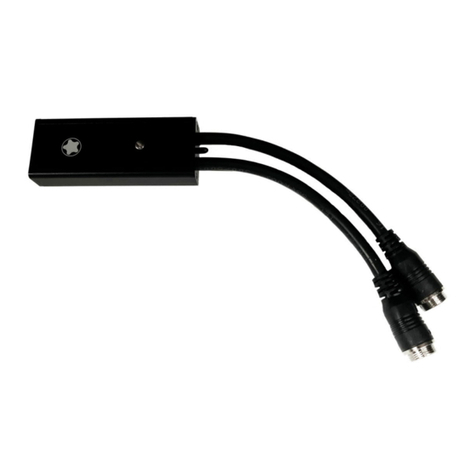
Lumen
Lumen WF-C user manual

GIA
GIA Giatsu GIA-J105 owner's manual
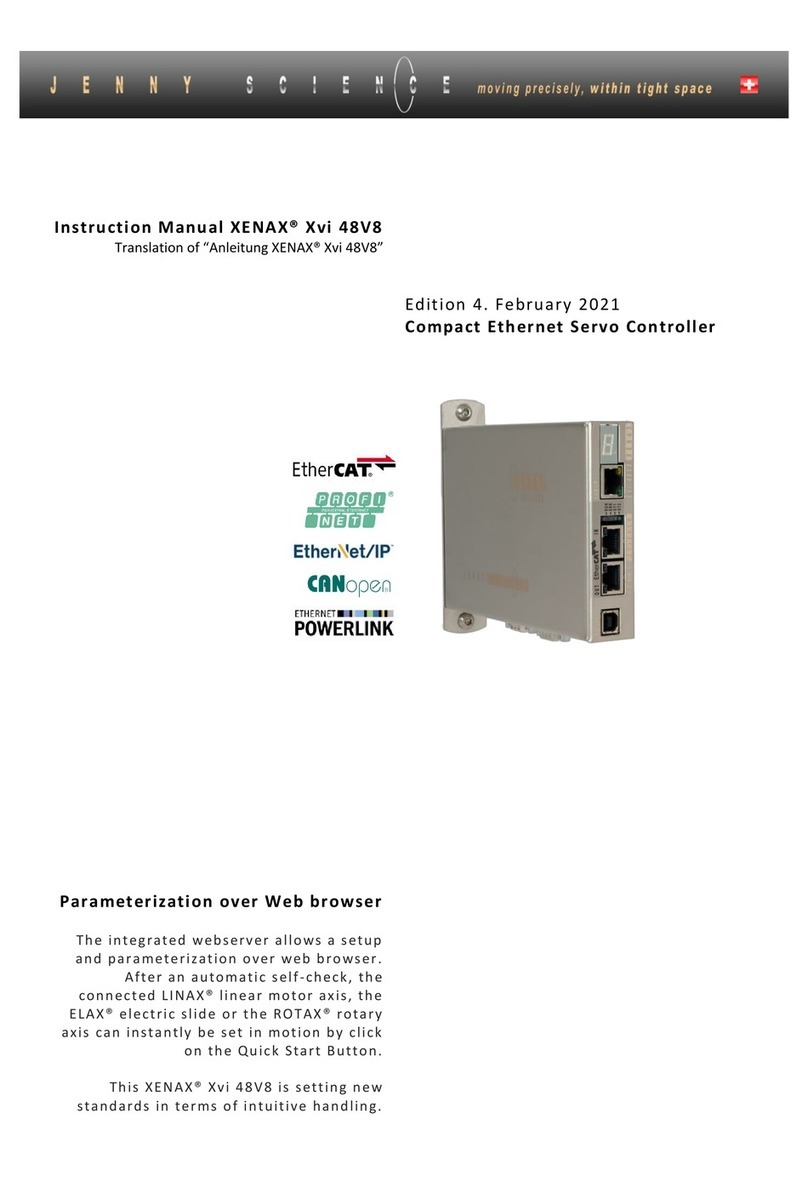
Jenny Science
Jenny Science XENAX Xvi 48V8 instruction manual
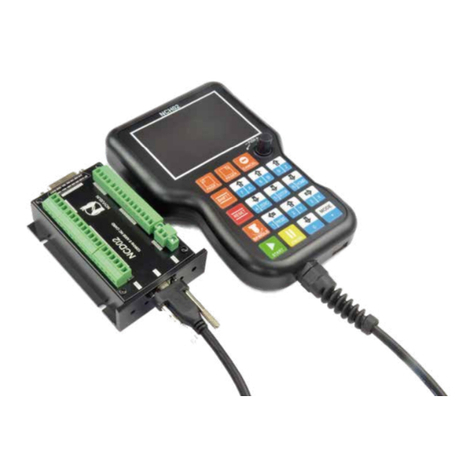
Digital Dream
Digital Dream NCH02 user manual
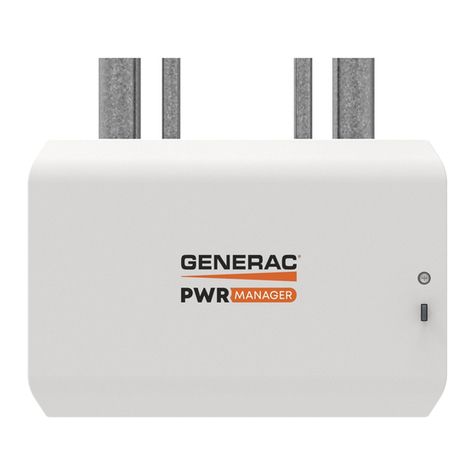
Generac Power Systems
Generac Power Systems PWRmanager owner's manual
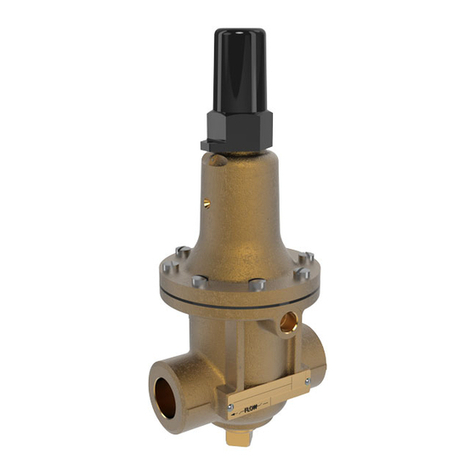
CLA-VAL
CLA-VAL CRL-60 Installation, operation & maintenance manual

